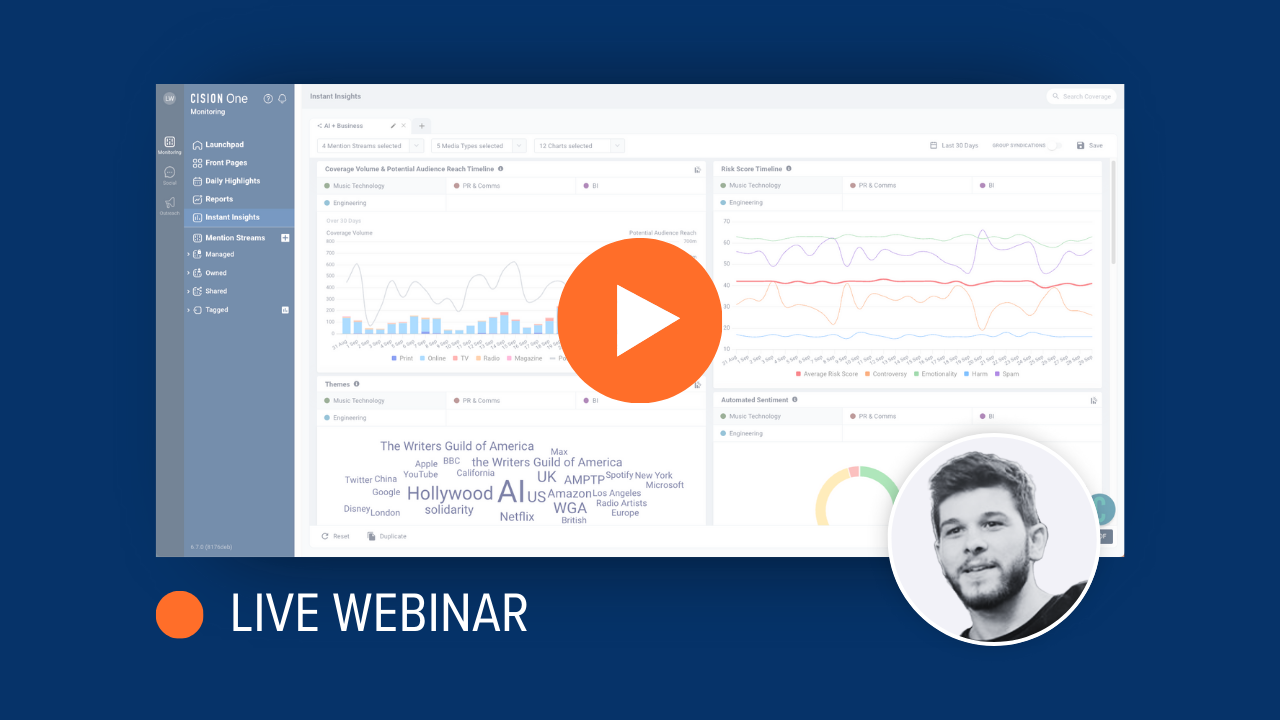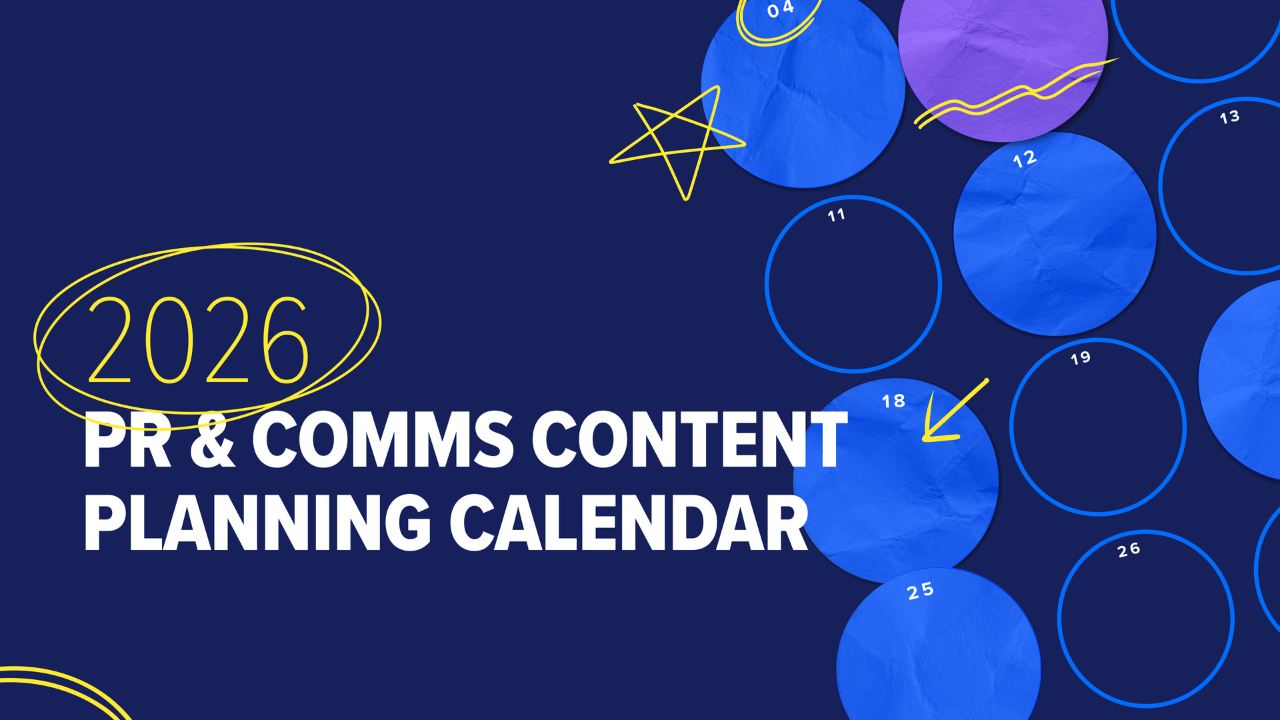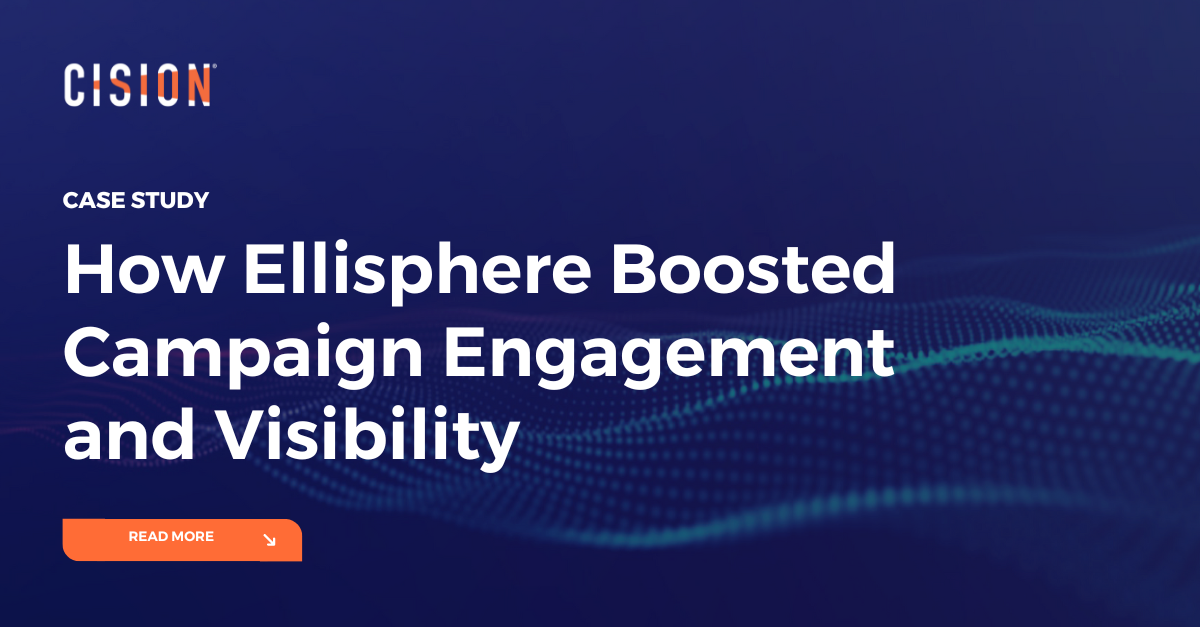Announcing a new product is a big deal for any brand. When you're the PR team supporting it, the pressure is largely on you to bring awareness to the product and generate excitement for it.
That’s why the right PR launch campaign matters: Without it, even the unveiling of the most innovative idea in the market may go completely under the radar.
There's a lot to think through when putting together a product launch plan, from building anticipation to setting off a steady drumbeat of coverage and maintaining post-launch momentum. With that in mind, here’s an eight-step guide to crafting an effective product launch PR plan.
1. Establish Your Product Launch PR Message
First things first: what are you really trying to say with your campaign? According to the 2025 State of the Media Report, 49% of journalists say their ideal pitch contains a unique story angle or point of view. So ensure you integrate a consistent, clear message into every touchpoint, from press releases to social media posts and email campaigns.
Here are three things to keep in mind as you establish your PR product launch message:
- Identify your key value proposition: What makes your product unique? What problem does this solve that existing solutions don't? When the iPod launched in 2001, Apple’s message had nothing to do with tech specs, instead it talked about holding “1,000 songs in your pocket.” Your own value proposition should talk up the benefits and be specific enough to resonate, yet broad enough to appeal across different media and audience groups.
- Develop messaging tailored to different audiences: Your central message needs to be adaptable to different stakeholders without losing clarity. When pitching the media, emphasize newsworthiness and industry innovation. For customers, focus on personal benefits and ease of use. For investors, highlight market gaps, opportunities and competitive advantages. Create supporting messages for each of these audiences, all linking back to the main value proposition.
- Align with internal stakeholders: Before finalizing your message, you need to get buy-in from the brand. Get alignment sessions in with key departments – everyone from sales to marketing, customer success, and senior leadership. Regular touchpoints will help ensure everyone understands the core message and can confidently communicate it. It also reduces the risk of mixed messaging down the line and empowers your entire team to become authentic advocates during the launch period.
2. Develop a Pre-Launch PR Plan
Build anticipation early to generate momentum before your product hits the market. The most effective product launches are the result of carefully planned pre-launch campaigns that create buzz and prime your audience for a big reveal.
The key is starting your PR efforts weeks or even months before launch day. This gives you time to secure media coverage, build relationships with key journalists, and create anticipation that translates into day-one demand.
Here are some tactics to consider for your pre-launch PR strategy:
- Brief key journalists in advance: Identify the most influential journalists in your sector and reach out to them before launch to offer embargoed briefings. This gives reporters time to understand your product and craft thoughtful coverage, rather than rushing to meet a short deadline. Twenty-three percent of reporters say they want products to review and test before they’ll consider covering them. Whenever possible, provide journalists with an opportunity to experience the product themselves – not only does it build your credibility as a trusted source, but they will be able speak to the product more authentically, underscoring the narrative about your brand.
- Create teaser campaigns: Trail your product launch with “coming soon” campaigns across social media, email, customer newsletters, your website, and any other owned channels. Think about using behind-the-scenes content as you gradually reveal more details. Email subscribers, who have already opted to interact with your content, are particularly valuable here. Check your open and click-through-rates and segment your email lists to deliver detailed previews to engaged subscribers, while keeping broader audiences intrigued with lighter teasers.
3. Create a Comprehensive Press Kit
Make it easy for reporters to cover your product, and you’ll boost your odds of securing earned media coverage. When they’re working to deadlines, the last thing they want is to chase down information and look for multimedia cleared for publication.
With a press kit (also known as a media kit) you’ll remove these friction points and create a resource to anticipate and answer common questions a journalist might have. This kit should be accessible through a dedicated press page on your website or shared folder with a clear structure. Keep it updated to ensure everything within is on message. Think about including:
- Product overview: Give a punchy, concise product description explaining what it does, who it's for, and why it matters. Include specs, pricing, availability dates, and key differentiators in jargon-free language.
- Images and other multimedia: Providing journalists with multimedia assets like product shots, videos, or even logos, serves both your interests and theirs. It adds context to their story and helps audiences get closer to experiencing the product for themselves. And the effort won’t go to waste: Not only have journalists cited multimedia as a top component of an “ideal” pitch, but most will use PR-provided multimedia to supplement their coverage. (Just make sure to supply high-quality formats and resolutions to accommodate usage across different platforms.)
- FAQs: Help journalists understand your new product launch by anticipating questions and giving them answers. This can include key statistics, launch timeline, and background context.
- Executive bios and quotes: Include biographical detail for executives, along with pre-approved quotes about the product launch. This saves journalists time and ensures consistent messaging across outlets.
- Company information: Provide relevant company facts including founding story, key milestones, and market position to help journalists tie everything together and show how it will impact the broader industry.
4. Leverage Media Outreach Exclusives
The 2025 State of the Media Report shows that 57% of journalists want to receive exclusives from the PR pros they work with, so it’s worth deploying some strategic exclusive stories to drive more in-depth coverage from high-value publications.
Think about creating a tiered list. Prioritize early “first look” product access to your top reporters, then go down the list and see if there are any ways to stagger stories after the embargo lifts with other journalists. That way, you stand a better chance of keeping your product in the headlines post launch.
Get creative with your pitching, too. Are there different angles and stories to tell about your product to different types of media outlets? If your pitch links back to your core message and your story is relevant to the journalist, there’s no reason not to cast a wider net.
5. Incorporate Social Proof Into Your Product Launch PR
The more credibility you can generate for your product, the more interest you’ll have at launch. Mix social proof through your PR campaign to build trust and demonstrate real-world value. Nothing validates your product claims like testimonials from actual people who've experienced the benefits for themselves.
Social proof also removes an element of risk for journalists. They’re more likely to cover a product that already has credible backing. When buyers see that others have used and endorsed your product, it reduces purchase hesitation and builds confidence in your brand.
Here are the most effective types of social proof to incorporate into your product launch plan:
- Early user testimonials: Pre-release users can give authentic testing feedback that can be used to provide quotes, testimonials, or highlight bugs that can be addressed before launch. The more specific the quote the better: “This raised our team’s productivity by 25%” is better than saying “this product is great.”
- Customer reviews and case studies: Early adopters can help shape detailed case studies that talk about your product’s main benefits. These can provide concrete examples of your product's impact and the problems it solves, long after your initial launch announcement.
- Third-party endorsements: Can you secure endorsements from industry experts, thought leaders, influencers, or relevant organizations? These types of brand advocates carry significant credibility, especially with B2B publications. A quote from a major industry authority can push your announcement from promotional content into legitimate news.
6. Integrate Owned, Earned, Shared, and Paid Channels
A multi-channel strategy will widen your reach and get your launch messaging across every touchpoint. The most successful product launches don’t just use a single channel, they draw on owned, earned, paid, and shared media to create unified campaigns that reinforce your core message from multiple angles.
Here's how to coordinate a multi-channel approach:
- Publish content on your brand website: Your own channels serve as the definitive source for your product story, so make use of them. Create a suite of launch content for your newsroom that journalists can reference and link to. Ensure this content is optimized for search and easily shareable across social platforms.
- Amplify your earned media coverage: Share media coverage you secure across your social channels and include it in select email campaigns. This is a good opportunity to extend the reach of earned media wins beyond the original publication's audience. Plus, it demonstrates credibility to your own followers.
- Use paid social ads to boost coverage: Promote high-quality earned media pieces through targeted social ads to reach specific audience segments. Focus your paid budget on amplifying your strongest coverage from the most credible publications.
7. Measure Your PR Product Launch Results
Effective PR measurement goes beyond vanity metrics like total coverage volume or AVE. Instead, focus on data that demonstrates real business impact and provides actionable insights for future product launches. Start tracking baseline metrics before your launch begins, then monitor performance throughout the campaign.
This is where you can put media monitoring tools like CisionOne to good use. Here are some examples of metrics to track as part of your new product launch plan:
- Media impressions and share of voice: Track media impressions to understand your campaign's potential reach, but dig deeper into share of voice compared to your competitors. Quality beats quantity. For example, three high-authority publications can deliver more value than dozens of mentions in low-traffic blogs.
- Website traffic and conversions from coverage: Measure direct traffic spikes, referral traffic from media coverage, and conversion rates from PR-driven visits. Use UTM link parameters to track which specific articles drive the most qualified traffic. This data connects your PR efforts to business outcomes.
- Social engagement and sentiment: Monitor social media mentions, engagement rates, and sentiment around your launch. Track how earned media coverage gets amplified on social platforms and measure the quality of conversations your product generates.
- Journalist feedback and placement quality: Which journalists provided the most valuable coverage? This qualitative data helps improve future outreach and builds your media relationship strategy for subsequent launches.
8. Have a Post-Launch PR Plan
Many brands make the mistake of treating launch day as the finish line, but smart PR pros know that post-launch momentum is key to long-term success. Your initial coverage creates awareness, but sustained engagement drives conversions and builds brand recognition over time.
Plan your post-launch activities before you launch to ensure seamless execution when media attention is highest.
- Share behind-the-scenes stories and follow-up coverage: Capitalize on initial interest by offering journalists fresh angles like customer success stories, usage statistics, or founder insights. These follow-up stories will keep your product in the news cycle.
- Monitor online conversations: Track social media mentions, review sites, and industry forums for customer feedback, frequently asked questions, and misconceptions about your product. Quick, helpful responses demonstrate excellent customer service and can turn potential issues into positive brand sentiment.
- Plan follow-up announcements: Schedule secondary announcements that build on your launch momentum. New partnerships, feature releases, or customer stories provide natural reasons to re-engage with journalists and maintain media interest in your product's ongoing development.
Final Thoughts
A successful product launch PR campaign requires careful orchestration across many touchpoints, from initial message development through to maintaining post-launch coverage.
The brands that cut through the noise don't rely on luck, they follow a product launch plan that builds anticipation, delivers value to journalists, and maintains engagement long after launch day. The key is starting early, staying consistent with your messaging, and treating your launch as the beginning of an ongoing journey rather than a single destination.
Find out how CisionOne can help inform your next product launch PR campaign. Speak to an expert.
Most Recent Posts
Cision Resources
-
E-books and Guides
Comprehensive how-to guides on strategy and tactics
-
Case Studies
What are other brands doing – and how can we learn from them?
About Simon Reynolds
Simon is the Senior Content Marketing Manager at Cision. He worked as a journalist for more than a decade, writing on staff and freelance for Hearst, Dennis, Future and Autovia titles before joining Cision in 2022.
Learn More. Do More. demo new
PR Tips, Case Studies, and Product Updates

[On-Demand Webinar] The Next Generation of Media Intelligence: From Gorkana to CisionOne
Explore CisionOne, a revolutionary media intelligence platform, and the evolution of Gorkana. Learn key features and strategies from Luke Williams, CisionOne Product Marketing Manager. Elevate your media outreach to new heights!


